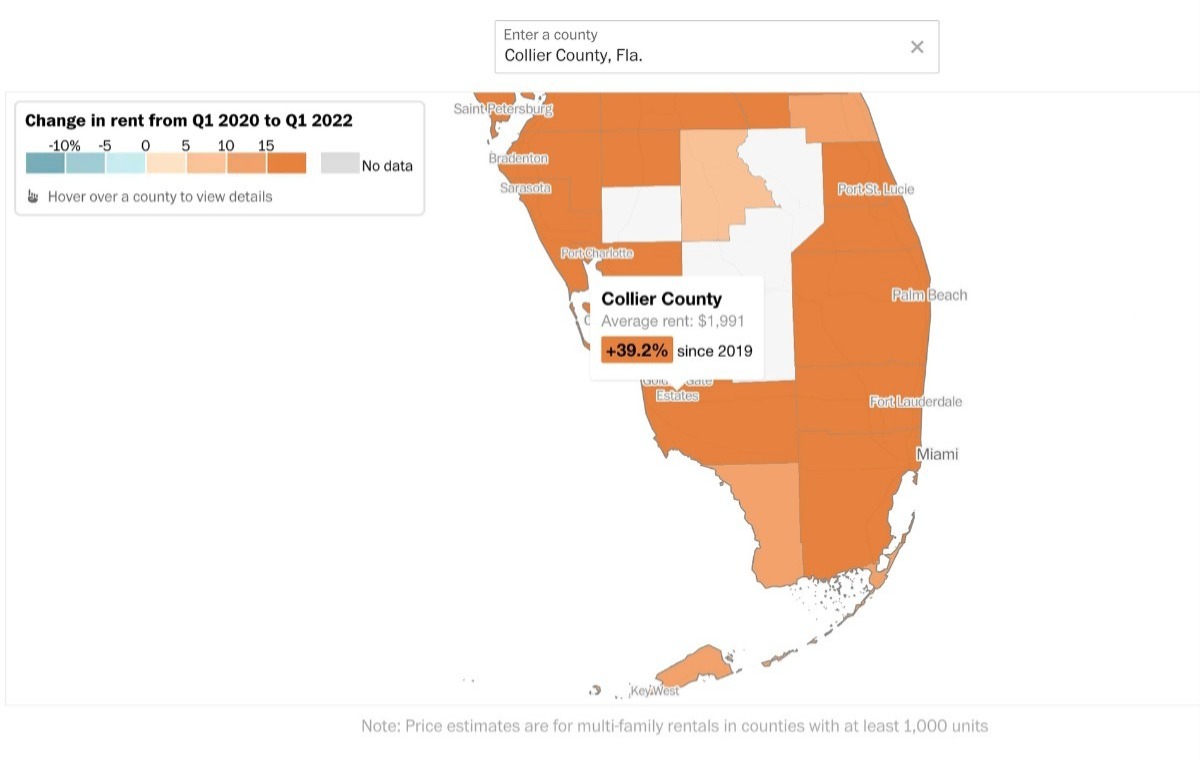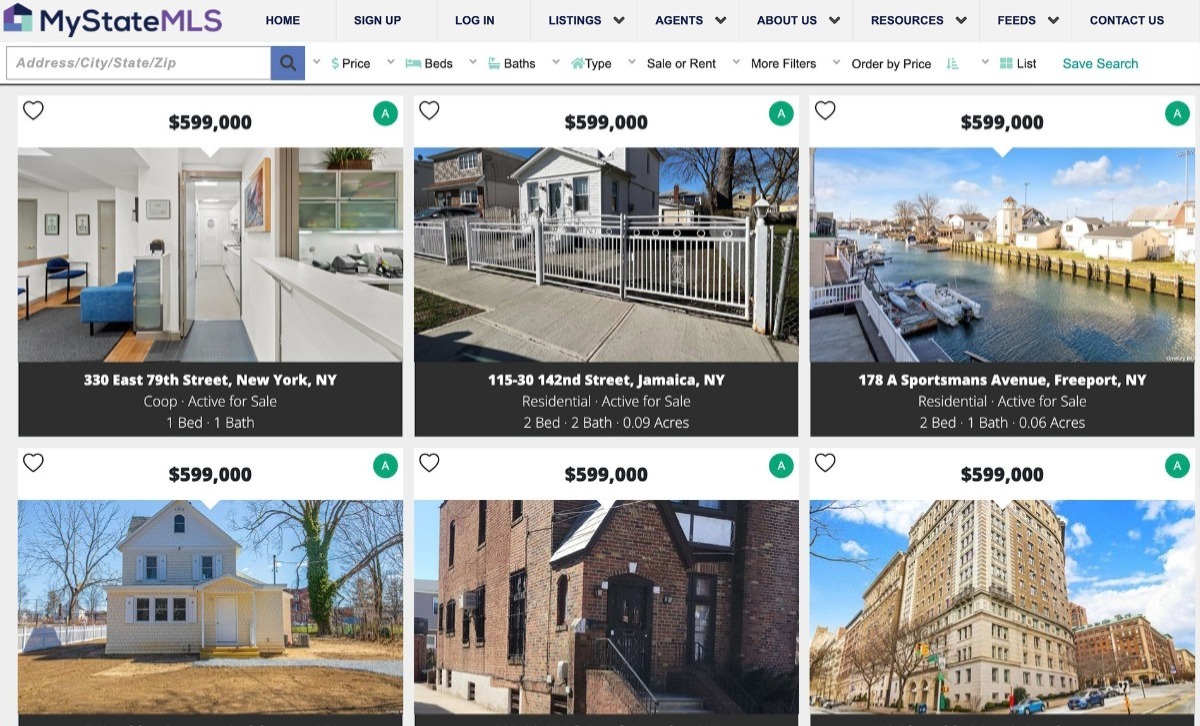Rents are rising everywhere. See how much prices are up in your area.

May 2, 2022
By Abha Bhattarai, Chris Alcantara and Andrew Van Dam, Washington Post
Interactive map to see how rent has changed in 1,500 counties across the U.S. since the start of the pandemic
Rents continue to rise at the fastest pace in decades, making housing costlier than ever for many Americans.
Nationally, rents rose a record 11.3 percent last year, according to real estate research firm CoStar Group. That fast pace of growth remained elevated in the first months of 2022, as many parts of the country continued to notch double-digit jumps in rent prices.
"A supply-demand mismatch is making rents unaffordable," said Dennis Shea, executive director of the J. Ronald Terwilliger Center for Housing Policy at the Bipartisan Policy Center. "The lowest-income families are being hardest hit by rising rents and a lack of supply."
The number of people - particularly younger Americans - looking for their own apartments is squeezing an already tight housing market. At the same time, pandemic-related material shortages and construction delays are slowing down the production of new homes and rentals. Experts like Shea say the shortfall of affordable rentals is likely to get even worse in the coming months, as mortgage rates, already reaching highs not seen since 2011 thanks to rising interest rates, drive would-be homeowners to rent instead.
Although few places in the United States have escaped recent hikes, rental spikes have been particularly pronounced along the Sun Belt and in Florida. The state is home to the three metro areas where monthly rent jumped the most: Naples, Sarasota and Tampa. Monthly rents in those cities are up between 29 percent and 39 percent in the past two years, according to CoStar.
Go Home TV Editors Note: Although the numbers are staggering, they are county averages. There are pockets that are much different than the averages. For example, in Palm Beach County, Florida, the rent increase has gone up 32%. However, in the Village of Wellington in Palm Beach County, the rent increase has gone up 43%. We're sure these differences are reflected around the U.S. - remember, all markets are local.

